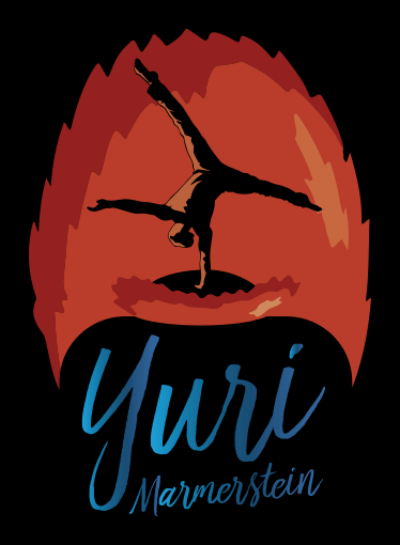I talk a lot about how hand balancing is a very individual journey and process. This means that you have to learn the restrictions, strengths, and limitations of your own body. After this, you need to learn how to apply these to in order to create a more fulfilling practice.
Hand balance is also very much an art of fine details. Since the practice has grown more popular recently, a lot of teachers of the art are popping up.
This is a great thing, as I believe that handstands are a staple of the physical arts and integral to building control and awareness of one's own body.
However, what ends up happening is that a lot of the finer details in the development of the art get overlooked when trying to reach a higher number of people.
I want to discuss a little bit about the chest to wall handstand. This is an introductory exercise, so it is accessible to a lot of people.
I'm not going to talk about right and wrong here, because that's subjective depending on the individual. There are, however a couple subtle errors I see many people make in my classes, other people's classes, and photos/videos I see online. These errors can create habits that are less than ideal for freestanding balance later on.
DISTANCE FROM THE WALL
The typical cue given here is to be as close to the wall as possible. This is a good cue...up to a point.
There is such a thing as being too close to the wall in some scenarios. A lot of it depends on body type and the situation the exercise is being used for.
The universal concept I teach in arm support for handstand is that the arms should be vertical. In order for me to hit that sweet spot in a CTW(chest to wall) handstand, I typically place the heels of my palms several centimeters from the wall.
I am built fairly thick in the chest, which means that sometimes it can get in the way. If I were to go as close to the wall as I could in a CTW handstand, it actually forces me to break my line by leaning my shoulders forward. I have to do this to stay on the wall, because my chest actually pushes me away when I get closer and maintain open shoulders.
If I had a slimmer profile, I could probably get away with being closer. Just remember every cue is good until it's taken too far. We want the arms vertical and ideally for the rest of the body to stack along the same line. If this isn't happening, it may be a good time to reevaluate your technique.
HEAD POSITION
Next, I want to talk about "proper" head position. The cue most people are working with is "head in", and I feel when this is taken too far it can hinder progress in the freestanding handstand.
I am not a fan of the "head in" cue for several reasons.
"Head In"
First, the ideal handstand alignment is about getting the arms, torso, and legs to stack about the same vertical line. The head and shoulders move independently of each other. Moving the head does not change the alignment of the body, so head positioning is less of a priority.
Second, one of the biggest reasons people like to pull their heads in is to create an illusion of better alignment. The head in makes it feel like the shoulders are more open when the line does not actually change.
Going further, take the standard "arms to ears" cue you hear often in kids gymnastics. This does not specify shoulder position, which should be the priority. I can achieve arms to ears with a 45 degree shoulder angle. My shoulders are more open in relation to my head, but not in relation to my back which is the target alignment.
As you can see in the photo, pulling my head in to touch the wall in a CTW handstand is actually stopping my shoulders from being able to reach the ideal position.
Third, inversion can invoke a fear response in beginners. Being able to see the floor helps with both balance and orientation, whereas the "head in" position gives you no point of reference for where you are.
HOW TO CORRECT
Effective cues in coaching are massively important. The goal is to hit as many birds as possible with one stone to simplify it for your students.
After finding the proper distance from the wall, the cue I use to activate good shoulder position is "upper chest to the wall".
By trying to pull your upper chest to the wall(even if it never touches), this takes care of both the open shoulder and ribs in requirements for the straight handstand. It also does this with little chance of compromising shoulder stability.
In order to touch your upper chest to the wall, the head needs to be slightly extended to allow clearance for the shoulders to open. This will also simulate the typical freestanding handstand position during which the practitioner is looking at the floor.
Upper Chest touching the wall
As always, just something to think about and apply to your own practice and teaching.
See the accompanied video explanation here:
P.S.
Of course the head does not have to be static. Changing head position can be an important part of a more advanced practice, it's just not something I would introduce to beginners. Check out Yuval Ayalon's video for a beautiful demonstration on head positioning: https://www.youtube.com/watch?v=N3K9SMNKL7Y


